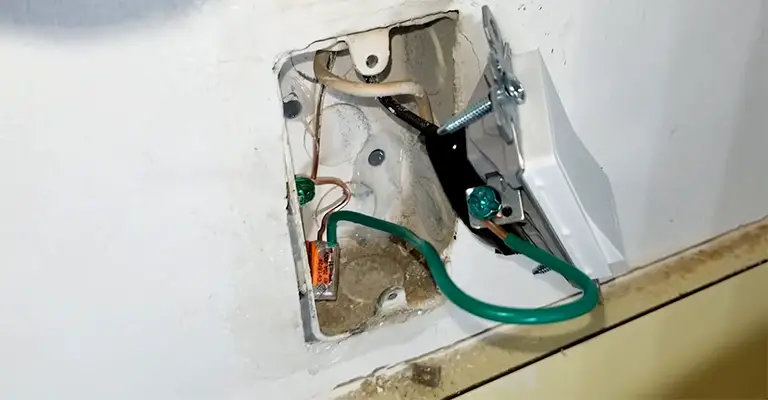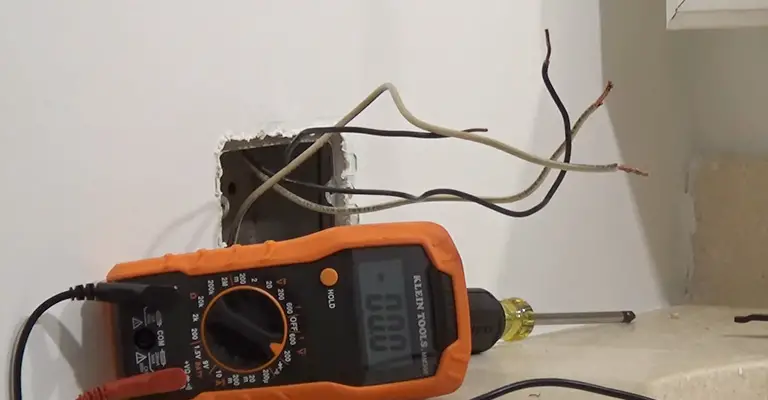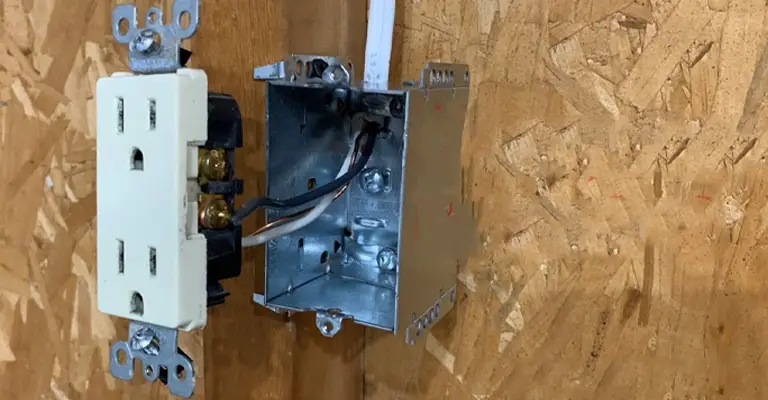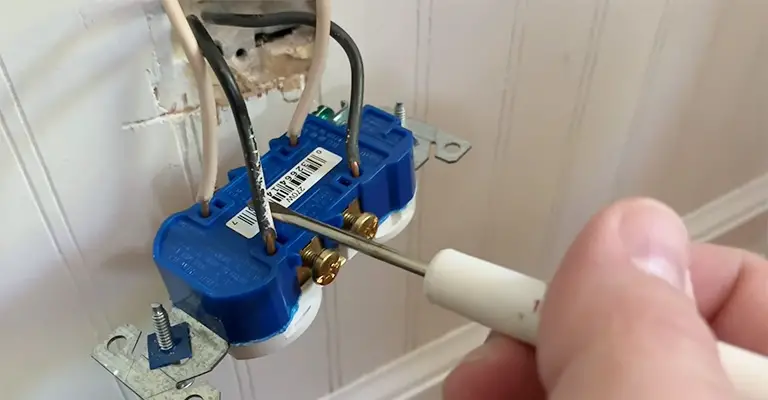Electrical safety is a paramount concern in any residential or commercial setting. One crucial aspect of ensuring safe electrical systems is the proper grounding of electrical circuits and devices.
Grounding provides a path for electrical faults to safely dissipate, preventing shocks, fires, and other potential hazards.
However, not all buildings or electrical systems are equipped with a ground wire, which can leave homeowners and electricians wondering how to handle this important safety feature’s absence.
A ground wire can be connected to an electrical junction box if no place is available for its attachment. After coiling up the ground wire, push it back into the junction box. It is extremely important not to cut the ground wire.
As long as the local codes allow it, you will need to connect a GFCI outlet to the undergrounded 2-prong outlet if there is no ground wire.
A panel upgrade is also an option, though it can be costly, so you might not want to go that route. If there is no ground wire in the electrical box, the box must not be grounded.
A short circuit will occur, and the electrical box will be energized. This will lead to the box overheating and catching on fire.
What to Do if There Is No Ground Wire?
Old houses often have undergrounded outlets that are a common source of concern for people. An electrical box with a missing ground wire is found when they install a new fixture.
There are usually old-fashioned two-prong receptacles to be found. The ground wire is not included even in 3-prong outlets.
GFCI As An Alternative To Ground

The National Electrical Codes (NEC) stipulate that the homeowners are not permitted to modify existing two-conductor wiring.
A GFCI is your only real option if you live in an old house without a ground wire. Determine whether you can install a 3-prong GFCI outlet underground for a 2-prong outlet.
This process should be handled by an experienced electrician. Electricians will disconnect the black or hot wire from the outlet and attach it to the GFCI’s brass “line” terminal.
Once the neutral wire has been disconnected, it will be attached to the “load” terminal. It is necessary to disconnect the ground terminal during the procedure.
How Do You Ground When There Is No Ground Wire?
Even though the GFCI outlet provides shock and fire prevention, it does not protect electronic equipment from power surges. It is therefore advisable to label the outlet “No Equipment Ground” after replacing the outlet.
Grounding The Wire

You simply have to ground a loose ground wire. The grounding wire will provide a place to discharge surplus electricity. Once you have the right tools and instructions, grounding the wire yourself is relatively easy.
Test your outlet with a circuit tester. The tester must be plugged into every outlet and the lights must be tested. Masking tape should be applied to an outlet if it displays a red light indicating it’s not properly grounded.
Turning off the electrical main box is the next step. A screwdriver is needed to remove the cover plate and receptacles of the outlet.
Make a loop over the green terminal of the outlet if a grounding wire has become loose or disconnected and secure it with a screwdriver.
Does A Light Fixture Have To Be Grounded?

When installing a new light fixture in an old house, people often find that there is no ground wire in the electrical box.
Three wires are typically attached to a new light fixture: the hot (black) wire, the neutral (white), and the ground (bare copper or green). Light fixtures are powered by the hot wire.
From the light fixture to the main electrical panel, the neutral wire serves as a return path for the current flowing between them.
An electrical conduit wire or even a light fixture short circuit can flow through the ground wire as a secondary path for the current to flow.
The hot, neutral, and ground wires are bundled in Romex cable. A metal frame attaches the ground wire to the light fixture.
There were usually only two wires in electrical cables in older homes. Metal conduit pipes were often used to run electrical wire throughout the house and connect electrical outlets and switch boxes.
My Experience With Grounding
Light fixtures and appliances were grounded by metal conduit pipe and electrical boxes. Residential construction, however, rarely used metal conduit or metal electrical boxes.
The ground wire was effectively absent in this case. Since decades, it has been illegal for new home construction to connect a home’s electrical wiring without a ground wire.
A light fixture should never have current flowing on its ground wire under normal operating conditions. Therefore, the neutral and ground wires cannot be connected together except at the main circuit panel’s bus bar.
Current will flow over the ground wire if a short circuit occurs between the hot wire or neutral wire and the metal frame of the light fixture.
This will cause the circuit breaker to trip, stopping current flow and preventing an electrical fire or fatal shock from occurring on the circuit.
No Ground Wire In Your Electrical Box?
In the case of an electrical box without a ground wire, what should you do? Metal boxes can be grounded by attaching the ground wire from the light fixture to them.
You can keep the light fixture’s ground wire float in the electrical box by taping it with electrical tape and letting it float in the box if it is not metal.
There is only one alternative left, and it will cost thousands of dollars to upgrade the wiring in the house.
Conclusion
It is typical for old houses to have no ground. There is a good chance that your ground wire has simply become loose or disconnected if you own a relatively new house.
Make sure you are equipped with the right tools and have the necessary experience when working with outlets. Unless you are able to revert before it is too late, be sure to hire a professional.







